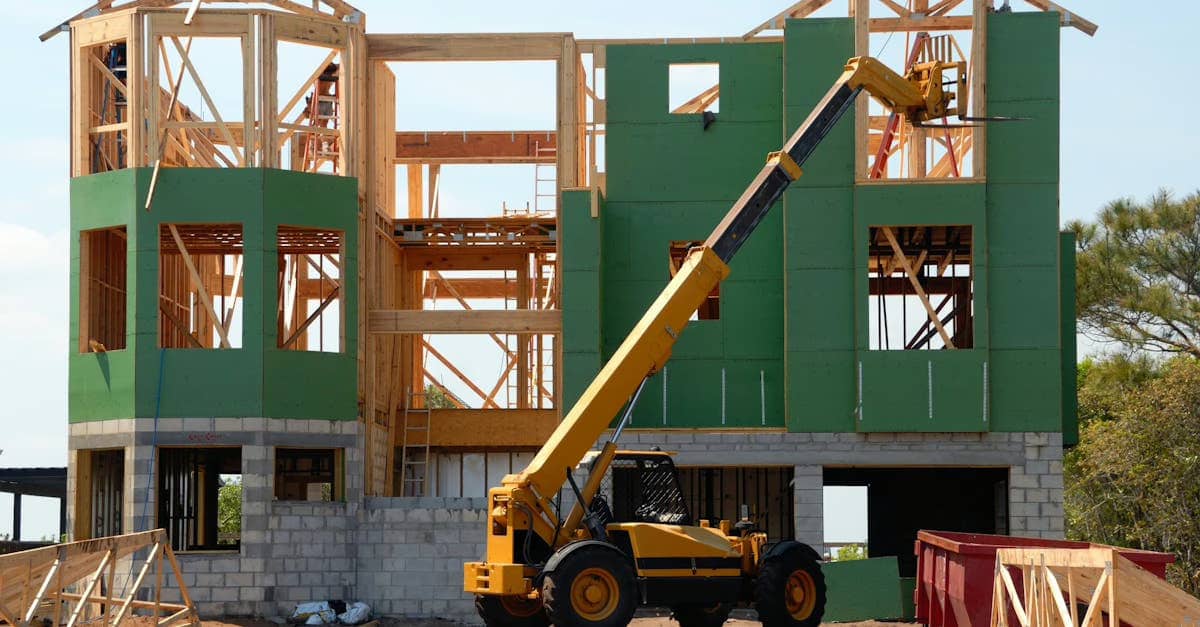How AI Transaction Coordinators Boost Real Estate Broker Compliance & Efficiency
AI transaction coordinators are reshaping the real estate back office, tackling critical compliance and operational pain points for brokers nationwide. As a former Realtor, I witnessed firsthand the immense administrative burden and the constant tightrope walk between closing deals and ensuring every “i” is dotted and every “t” is crossed according to state and federal regulations. This is where the power of AI comes into play, offering not just a helping hand, but an intelligent partner to navigate the complexities of real estate transactions. For real estate brokers, staying compliant while scaling operations is paramount, and failing to do so can result in hefty fines, legal issues, and damage to reputation. The traditional transaction coordination process, often manual and fragmented, leaves significant room for human error, which is a major compliance risk. This is precisely the challenge that innovative solutions like ReBillion.ai are designed to address, offering robust tools to automate processes, enhance accuracy, and provide much-needed oversight in a fast-paced market.
The Broker’s Compliance Tightrope: More Than Just Paperwork
Real estate brokers bear ultimate responsibility for their agents’ transactions. This includes ensuring all documentation is accurate, timely, and stored correctly, adhering to escrow timelines, disclosure requirements, anti-money laundering regulations, and state-specific mandates. It’s a monumental task that grows exponentially with brokerage size and transaction volume. The consequences of missing a signature, misfiling a document, or failing to meet a deadline can be severe. Moreover, supervising multiple agents and their varied transaction styles adds another layer of complexity. Maintaining consistent compliance standards across an entire brokerage requires vigilance, robust systems, and efficient workflows.
Common Compliance Pitfalls for Brokerages
- Incomplete or Incorrect Disclosures: Failure to provide required disclosures can lead to rescission rights or lawsuits.
- Record Keeping Issues: Incorrect or missing transaction files can result in fines during audits.
- Trust Account Violations: Mismanagement of client funds carries severe penalties.
- Advertising Rule Breaches: Non-compliant marketing materials can attract regulatory attention.
- Fair Housing Violations: Discrimination issues pose significant legal and ethical risks.
- Missed Deadlines: Contractual dates and regulatory filing deadlines are non-negotiable.
Addressing these pitfalls manually is time-consuming and prone to error. Brokers need proactive solutions that build compliance checks directly into the workflow.
Enter AI Transaction Coordinators: A New Era of Efficiency
AI transaction coordinators aren’t just software; they are intelligent systems designed to manage the complex, repetitive, and detail-oriented tasks inherent in real estate transactions. Leveraging artificial intelligence and machine learning, these tools can process documents, track deadlines, communicate with parties, and flag potential issues with remarkable speed and accuracy. For a busy brokerage, this translates directly into saved time, reduced risk, and increased capacity.
How AI Transforms the Transaction Workflow
Automated Document Processing and Verification
One of the most time-consuming aspects of transaction coordination is managing the sheer volume of paperwork. AI can automatically extract key information from documents (like closing dates, addresses, names, and specific clauses), categorize files, and even perform initial checks for completeness and signatures. For instance, ReBillion.ai’s platform can ingest transaction documents and instantly organize them, identifying critical fields and populating checklists, ensuring that no essential document or piece of information is overlooked.
Intelligent Deadline Tracking and Reminders
Missing a deadline can kill a deal or trigger a compliance issue. AI transaction coordinators automatically calculate and track critical dates based on contract terms – inspection periods, financing contingencies, closing dates, etc. They send automated reminders to agents, TCs, and clients, ensuring everyone stays on schedule. This proactive approach minimizes the risk of costly delays or contractual breaches.
Enhanced Compliance Monitoring and Auditing
AI systems can be programmed with brokerage policies and regulatory requirements. As documents are processed and tasks are completed, the AI can perform real-time compliance checks, identifying missing forms, incorrect information, or potential red flags. This creates a continuous audit trail, making internal reviews and external audits significantly smoother and less stressful. ReBillion.ai offers features specifically designed for agent-broker compliance monitoring, providing brokers with dashboards that offer visibility into transaction statuses and compliance adherence across their entire team.
Streamlined Communication and Collaboration
Effective communication is key to a successful transaction. AI can automate routine communications, such as sending initial intros, reminding parties of upcoming milestones, or requesting missing information. Integrated platforms allow agents, TCs, clients, and other parties to access transaction status updates and documents through secure portals, improving transparency and reducing back-and-forth emails and calls. This frees up human TCs to focus on complex problem-solving and client relationships.
Scalable Back-Office Support with Virtual Assistants
Beyond the core AI functionalities, platforms like ReBillion.ai often integrate AI with human expertise in the form of virtual assistants for real estate. These are trained professionals who work alongside the AI, handling tasks that require human judgment or interaction, such as complex negotiations, client phone calls, or resolving unique document issues. This hybrid approach provides brokerages with scalable back-office support that can flex with transaction volume without the overhead of hiring full-time staff. Using virtual assistants powered by AI tools allows brokerages to significantly increase their capacity and efficiency. Explore AI Virtual Assistants for Real Estate Brokerages.
Choosing the Right Transaction Coordinator Tools
Selecting the appropriate transaction coordinator tools is a crucial decision for any brokerage looking to leverage technology for growth and compliance. The market offers various solutions, from basic checklist software to sophisticated AI-powered platforms. When evaluating options, consider the following:
- Integration Capabilities: Does it integrate with your CRM, e-signature platforms, and accounting software?
- Customizability: Can workflows and checklists be tailored to your brokerage’s specific processes and state requirements?
- Compliance Features: How robust are the built-in compliance checks and audit trails?
- Scalability: Can the solution grow with your brokerage?
- User Experience: Is it intuitive for agents, TCs, and administrators?
- Support and Training: What level of support is provided?
Platforms like ReBillion.ai are built specifically for the real estate industry, offering comprehensive features that address the unique challenges of brokerage operations and compliance. Their focus on AI and automation provides a competitive edge.
Actionable Tips for Brokerages Implementing AI Transaction Coordination
Implementing new technology requires careful planning and execution. Here are 3–5 tips for brokers considering or adopting AI transaction coordinators:
- Assess Your Current Workflow: Map out your existing transaction process to identify bottlenecks and compliance weak points that AI can address.
- Train Your Team: Provide thorough training to agents, TCs, and administrative staff on how to use the new system effectively. Emphasize the “why” – how it improves their work, reduces stress, and ensures compliance.
- Customize Compliance Checklists: Tailor the AI’s checklists and compliance rules to match your brokerage policies and the specific regulations of your state(s) of operation.
- Integrate with Existing Systems: Connect the AI TC platform with your CRM, e-signature tools, and other essential software for a seamless workflow.
- Phase Rollout (Optional but Recommended): Consider piloting the system with a small group or for a specific transaction type before rolling it out brokerage-wide.
Why AI-Powered Transaction Coordination Matters for Brokerages
The operational and financial importance of adopting advanced transaction coordinator tools cannot be overstated. From an operational perspective, AI and automation free up valuable time for agents to focus on revenue-generating activities – prospecting, listing presentations, and client relationships. For transaction coordinators, it removes the monotony of manual data entry and tracking, allowing them to handle a higher volume of transactions with greater accuracy and less stress, focusing instead on complex problem-solving and client communication.
Financially, increased efficiency directly impacts the bottom line. Brokerages can process more deals with the same or fewer administrative resources. Reduced errors and proactive compliance monitoring significantly lower the risk of costly fines and legal disputes. A more streamlined and compliant process also enhances the brokerage’s reputation, attracting both agents and clients. Ultimately, investing in AI transaction coordination is an investment in the brokerage’s future growth, stability, and profitability.
Key Points
Adopting AI transaction coordinators enhances compliance, boosts efficiency, and reduces risk for real estate brokerages. Key benefits include automated document processing, intelligent deadline tracking, real-time compliance monitoring, streamlined communication, and scalable support via AI virtual assistants. Implementing these tools requires assessing workflows, training teams, and customizing systems for optimal results and significant operational/financial benefits.
FAQs
What is an AI transaction coordinator?
It’s an intelligent system using AI to automate and manage tasks in real estate transactions, like document handling, deadline tracking, and compliance checks, reducing manual work.
How does AI improve real estate broker compliance?
AI automatically performs checks against rules, tracks required documents and deadlines, and provides audit trails, significantly reducing the chance of human error in compliance.
Can AI transaction tools integrate with my CRM?
Most advanced AI transaction platforms are designed to integrate with popular real estate CRM systems to ensure seamless data flow and workflow management.
Are AI virtual assistants different from AI transaction coordinators?
AI virtual assistants often work alongside AI tools, providing human touch and judgment for tasks AI alone cannot handle, offering scalable support to brokerages.
How long does it take to implement AI transaction coordination software?
Implementation time varies based on the platform’s complexity and brokerage size, but typically ranges from a few weeks to a couple of months, including setup and training.
Resources
- ReBillion Team Transaction Coordinators & AI
- AI Virtual Assistants for Real Estate Brokerages
- Virtual Assistants & AI Tools for Real Estate Agents
- Visit ReBillion.ai
Conclusion
The future of real estate transaction management is intelligent automation. AI transaction coordinators offer a powerful solution for brokerages grappling with increasing transaction volumes and stringent compliance demands. By automating routine tasks, providing proactive compliance checks, and streamlining communication, these tools enable brokers and their teams to operate more efficiently, reduce risk, and focus on growth. Embracing this technology isn’t just about staying competitive; it’s about building a more resilient, compliant, and profitable brokerage.
ReBillion.ai helps real estate brokers streamline operations with AI-powered transaction coordination, virtual assistants, and intelligent back-office automation. Whether you’re scaling your team or closing more deals, ReBillion.ai is built to simplify your brokerage’s compliance, efficiency, and growth. Visit ReBillion.ai to explore solutions or schedule a consultation.


